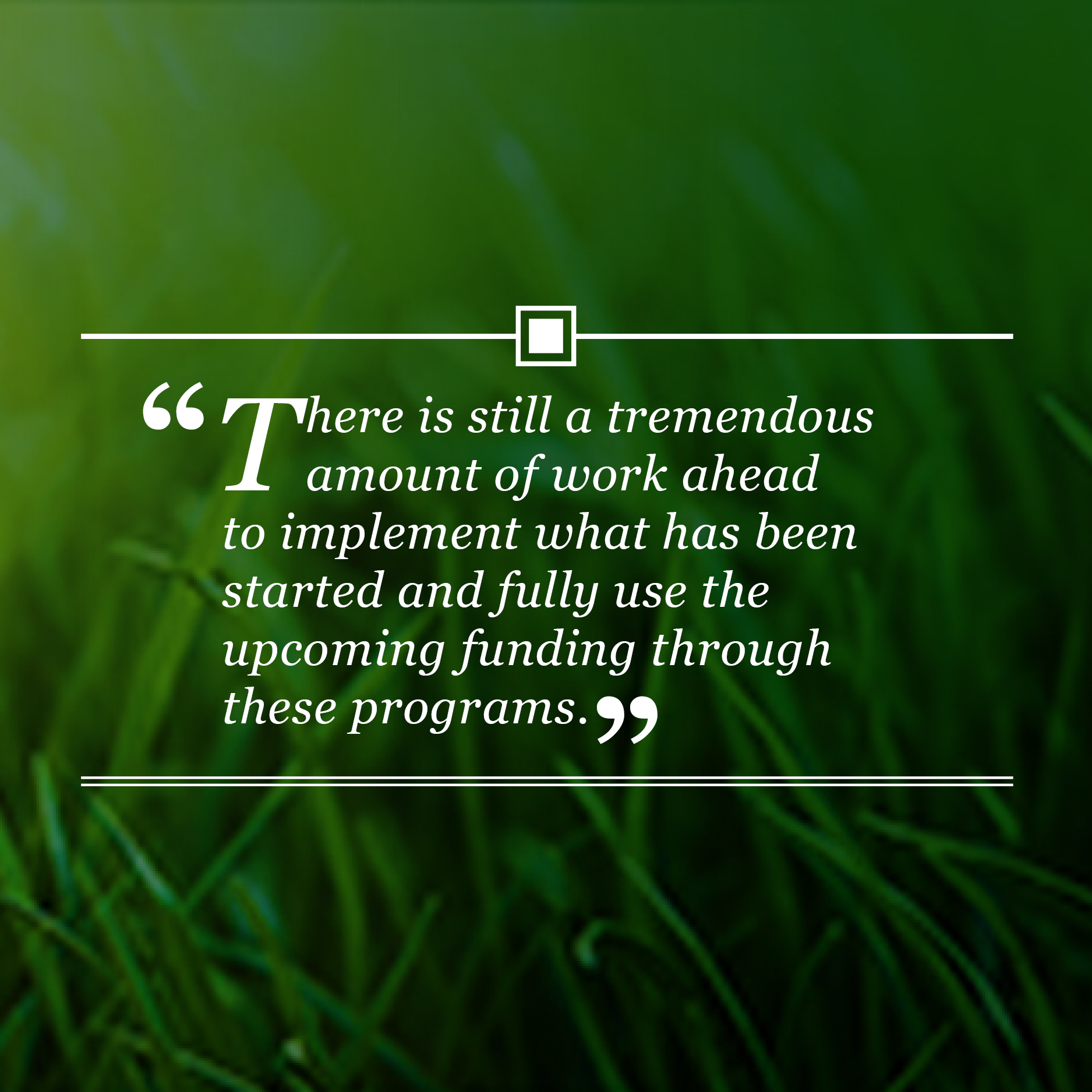
The late American disc jockey and radio personality Casey Kasem said, “The hits just keep on coming!” That seems to be the case for energy and climate change funding and awareness. On Nov. 15, 2021, The Infrastructure Investment and Jobs Act (IIJA), also known as the Bipartisan Infrastructure Law, includes investing about $1.2 trillion — $550 billion of which is new spending on U.S. infrastructure. The act also provides important funding for energy and climate change efforts, such as the electrification of transportation, alternative fuels, climate resilience, carbon capture and energy efficiency and storage.
A month later, Executive Order 14057: Catalyzing Clean Energy Industries and Jobs Through Federal Sustainability was signed. Section 101 states, “The Federal Government faces broad exposure to the mounting risks and costs already posed by the climate crisis.” The section goes on to say, “It is therefore the policy of my Administration for the Federal Government to lead by example in order to achieve a carbon pollution-free electricity sector by 2035 and net-zero emissions economy-wide by no later than 2050.”
The order sets several benchmarks to reach under Section 102, which states, “Through a coordinated whole-of-government approach, the Federal Government shall use its scale and procurement power to achieve:
- 100 percent carbon pollution-free electricity on a net annual basis by 2030, including 50 percent 24/7 carbon pollution-free electricity … ;
- 100 percent zero-emission vehicle acquisitions by 2035, including 100 percent zero-emission light-duty vehicle acquisitions by 2027;
- a net-zero emissions building portfolio by 2045, including a 50 percent emissions reduction by 2032;
- a 65 percent reduction in scope 1 and 2 greenhouse gas emissions, as defined by the Federal Greenhouse Gas Accounting and Reporting Guidance, from Federal operations by 2030 from 2008 levels;
- net-zero emissions from Federal procurement, including a Buy Clean policy to promote use of construction materials with lower embodied emissions;
- climate resilient infrastructure and operations; and
- a climate- and sustainability-focused Federal workforce.”

The Inflation Reduction Act of 2022 (IRA) was subsequently signed into law Aug. 16 and authorizes $391 billion of spending on energy and climate change and, according to the Environmental Protection Agency, “is the most significant climate legislation in U.S. history. IRA’s provisions will finance green power, lower costs through tax credits, reduce emissions, and advance environmental justice.”
In addition, Executive Order 14008: Tackling the Climate Crisis at Home and Abroad was signed Jan. 27, 2021, and, as a result, numerous federal agencies have released climate adaptation action plans. On Oct. 6 this year, the Department of Defense, along with agencies across the federal government, released the 2022 Climate Adaptation Plan Progress Report.
2021 and 2022 have been busy years for energy and climate change funding and awareness in the United States. However, there is still a tremendous amount of work ahead to implement what has been started and fully use the upcoming funding through these programs.
Examples of programs we are following include the Department of Energy’s new Office of State and Community Energy Programs (SCEP), which was created as part of the IIJA and is a center of excellence to accelerate climate and clean energy solutions. The SCEP has a funding oversight of $16 billion ($6 billion in IIJA funding and $10 billion in IRA rebates). Some of its programs include the State Energy Program, which includes IIJA provisions of $500 million for fiscal years 2022–26 and $250 million for the Energy Efficiency Revolving Loan Fund Capitalization Grant Program; Grants for Energy Improvements at Public School Facilities, which provides $500 million ($100 million over five years) from the IIJA; and the Energy Efficiency and Conservation Block Grant Program, which provides $550 million from the IIJA to local governments, states, territories and Native American tribes.
If we follow Casey’s signature signoff line, “Keep your feet on the ground, and keep reaching for the stars,” hopefully, we will achieve these goals and make the world a better place for our children, grandchildren and future generations!
Bill Bradford can be reached at bbradford@hanson-inc.com.